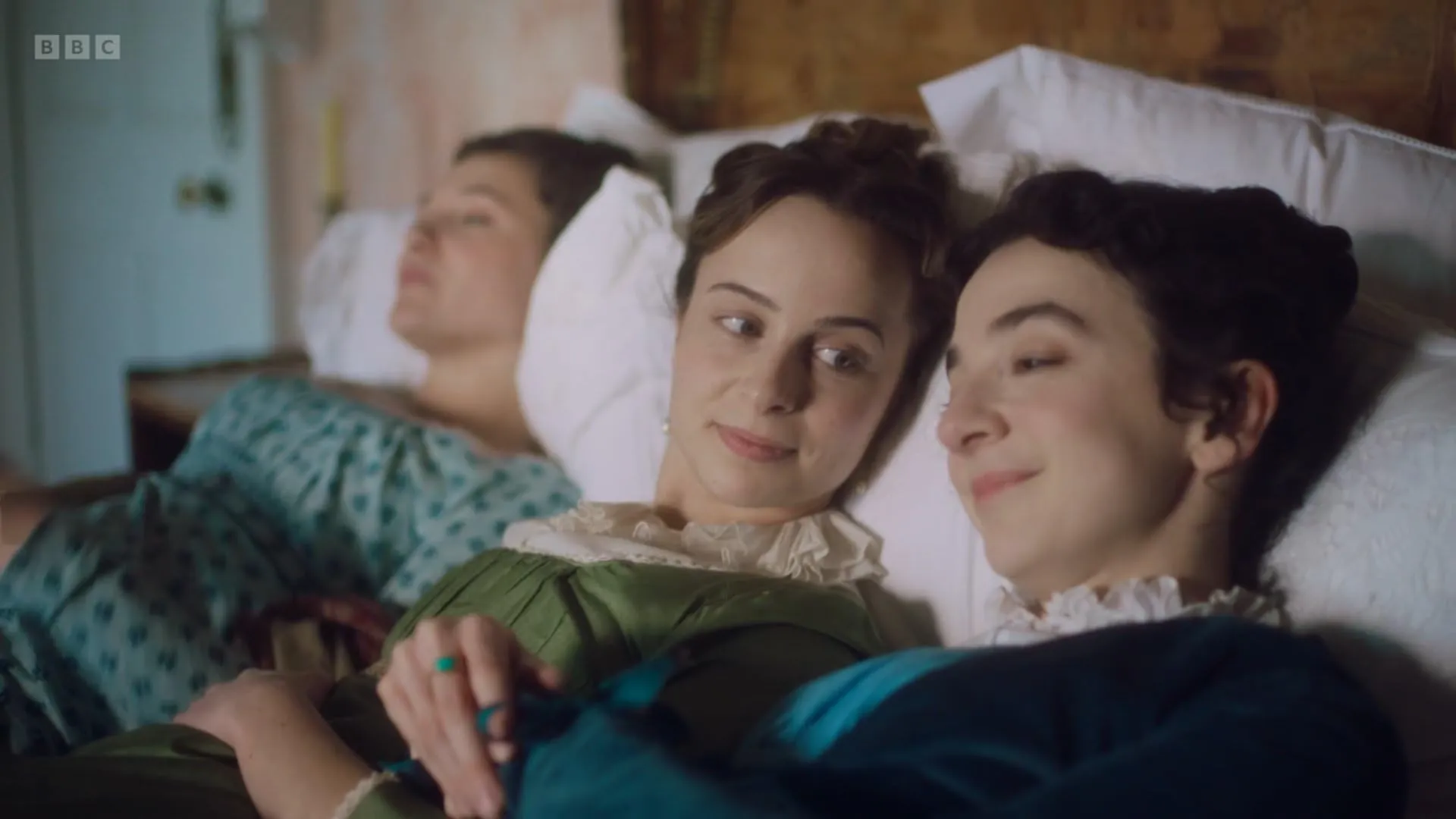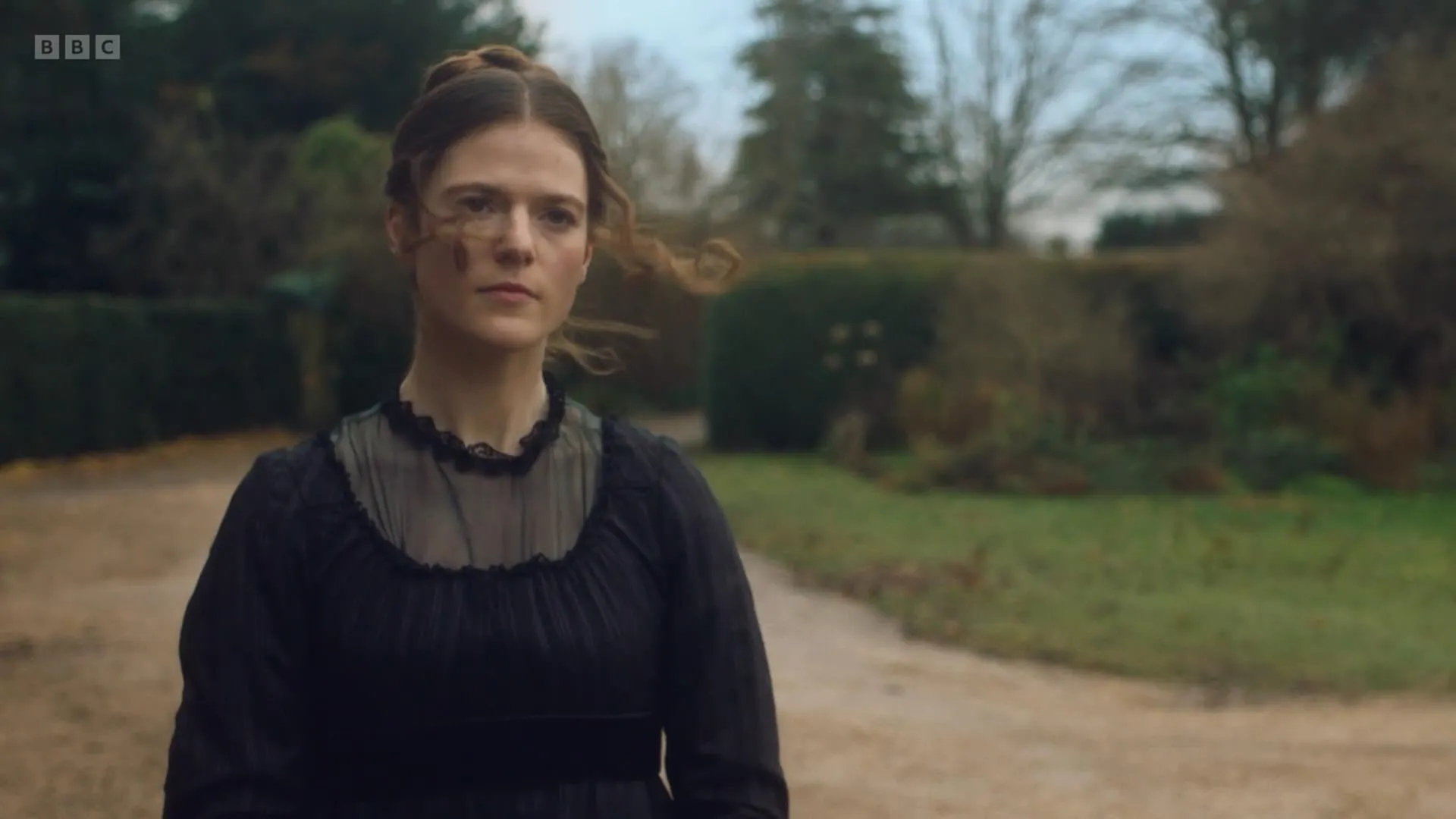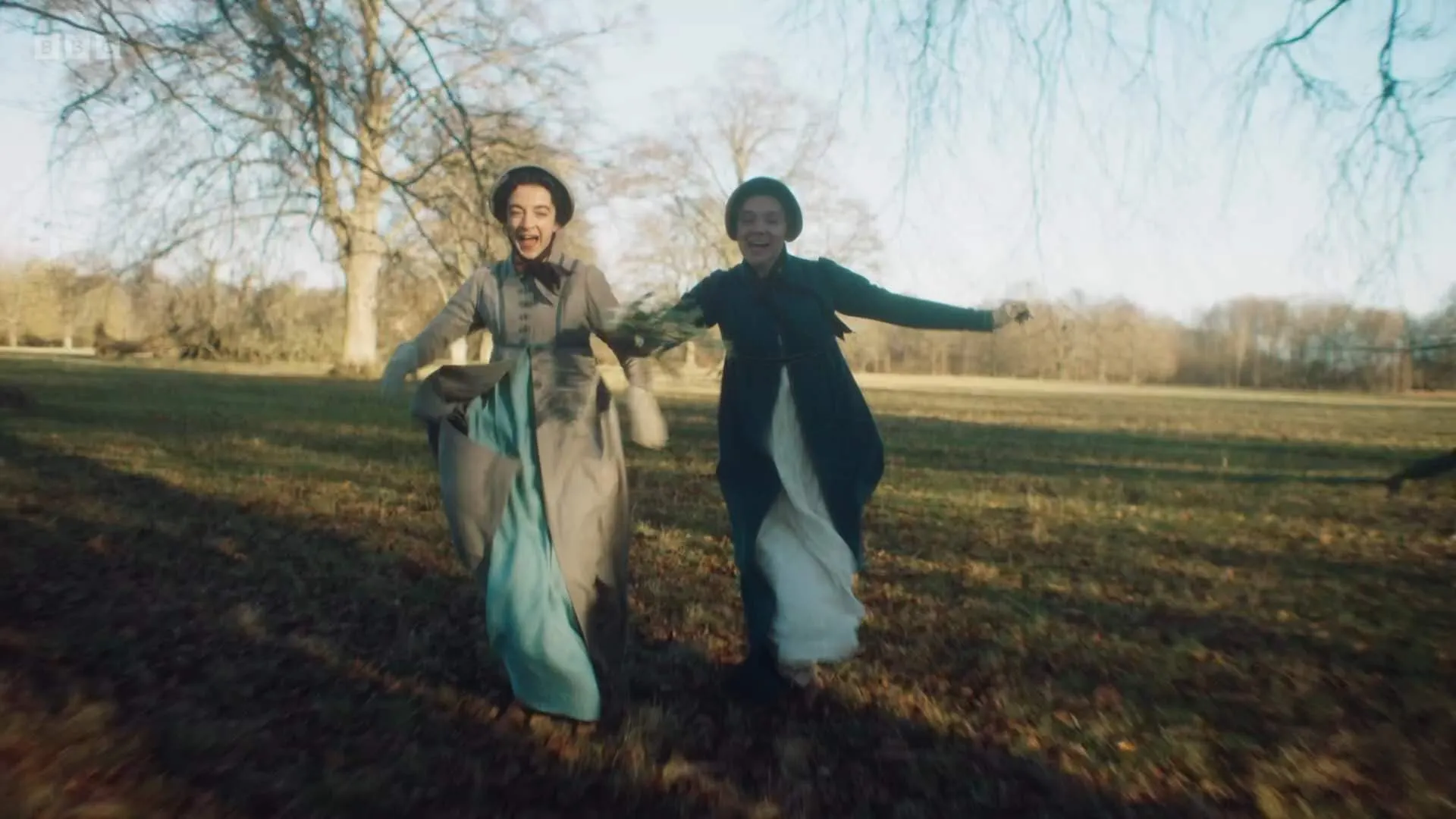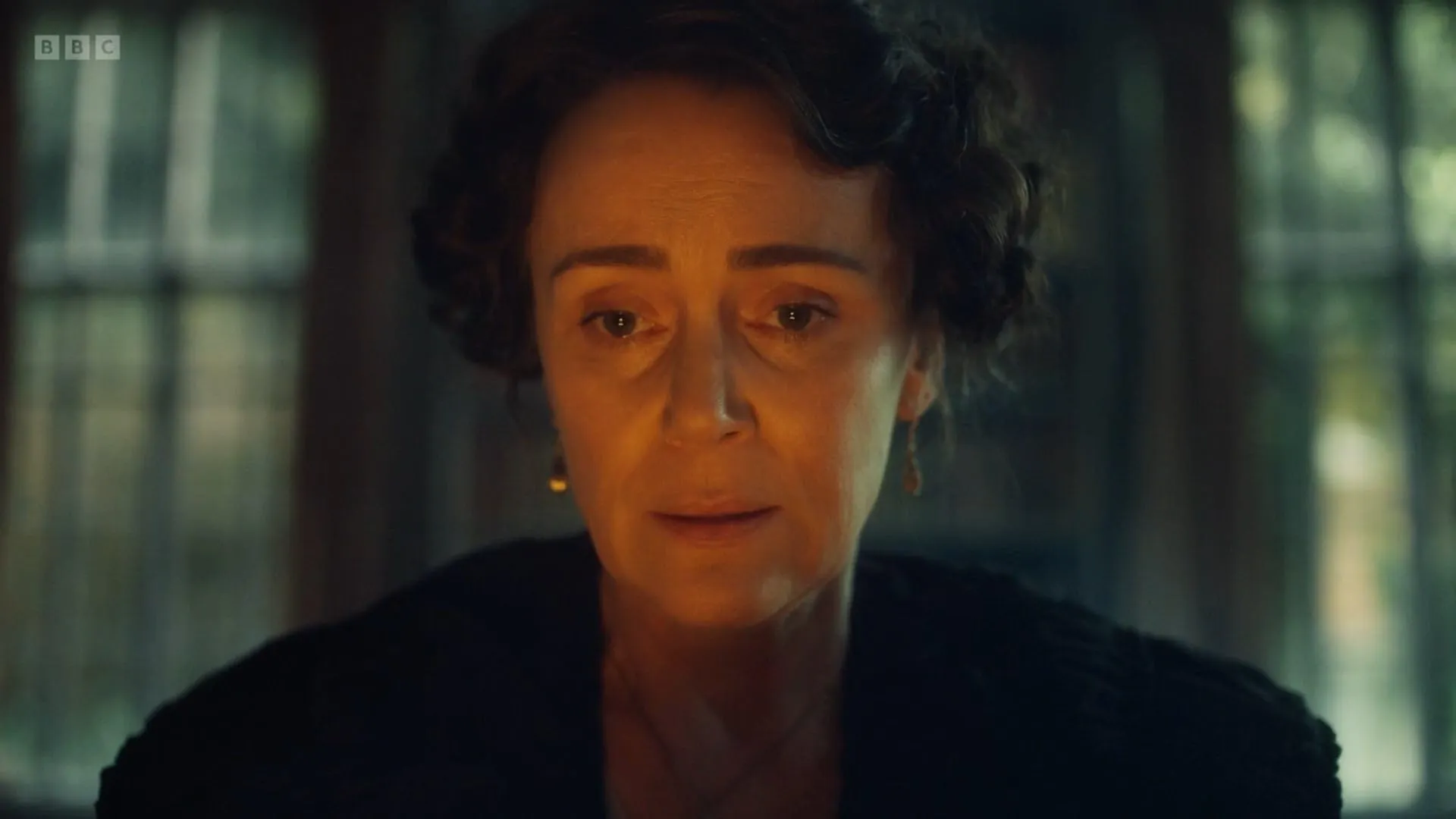In the dim light of 1830, thirteen years after Jane Austen’s death, literary history reveals a complex narrative. Cassandra’s search for her late sister’s letters becomes a delicate mission balanced between preservation and destruction.
The letters represent more than paper—they are potential harbingers of scandal that could alter Jane’s carefully constructed public image. The mystery behind Cassandra’s choice to burn these documents carries deep emotional weight, exploring the intricate dynamics of familial bonds and their hidden tensions.
The narrative moves beyond linear storytelling, weaving through time with intricate flashbacks. Scenes of Jane and Cassandra’s youth emerge, displaying their profound connection through moments of shared emotion and fleeting struggles. These recollections illuminate Cassandra’s present-day actions, revealing her destruction of letters as an act of profound, silent devotion. The sisters’ connection becomes visible—a relationship so intense it transcends written communication, leaving only memories and ashes.
Mary Austen emerges as a contrasting figure, seeking to exploit Jane’s legacy through the letters. Her opportunistic approach stands in stark opposition to Cassandra’s protective instincts. This conflict creates a dramatic tension reminiscent of the most powerful moments in Austen’s own writing, where personal reputation and familial loyalty collide with raw, human intensity.
The Silent Drama: Unspoken Bonds and Fragile Tensions
In Miss Austen, Keeley Hawes embodies Cassandra Austen with profound depth, portraying a woman shaped by duty and sorrow. Her performance reveals Cassandra’s inner world through restrained gestures and unspoken emotions. She crafts a character defined by silent sacrifices—each glance laden with untold stories.
Hawes creates a Cassandra who radiates quiet strength, oscillating between stoicism and raw vulnerability. Her nuanced portrayal makes every scene throb with emotional intensity, whether confronting Mary’s scheming or examining Jane’s letters. The character emerges as a guardian of memories, her grief etching itself into every movement.
Patsy Ferran’s Jane bursts with vibrant energy—a portrayal that shatters typical historical representations. She embodies Jane as a spirited, complex woman, delivering lines with crackling intelligence and playful defiance. Ferran’s interpretation reveals a writer both brilliant and unpredictable, far from the genteel image often presented.
Her chemistry with Synnøve Karlsen (young Cassandra) sparks with electric authenticity, their sisterhood forming the narrative’s emotional core. Their connection transcends words, creating a relationship both tender and fierce.
Supporting performers enrich the storytelling. Rose Leslie brings subtle power to Isabella, capturing a woman’s struggle within restrictive social boundaries.
Jessica Hynes transforms Mary into a character of calculated ambition—her performance walking a razor’s edge between dramatic tension and dark humor. Each actor contributes layers to a narrative exploring familial connections, personal legacy, and the unspoken depths of sisterly love.
The Weight of Ashes: Love, Loss, and the Sisterhood That Endures
Miss Austen explores a deep examination of sorrow that stretches beyond typical mourning. Cassandra’s grief for Jane permeates her existence—an invisible weight coloring every choice. Her mission to protect Jane’s letters becomes a powerful statement of sibling devotion.
Time shifts between past and present reveal a raw emotional landscape. The letters represent more than paper—they are fragments of a relationship too complex to be easily understood. Each page becomes a painful reminder of a connection severed by death, with Cassandra wrestling between preservation and destruction.
The narrative reveals the intricate relationship between Jane and Cassandra, exposing a connection far deeper than typical sisterly bonds. Flashbacks illuminate their world—a space where unspoken understanding communicates more than words.
Their relationship pulses with shared dreams, silent conflicts, and profound intimacy. Cassandra’s choice to destroy Jane’s letters emerges as a complicated expression of love. She grapples with protecting her sister’s memory, sacrificing personal history to shield Jane’s reputation.
The series questions the nature of such sacrifice: can an act of protection become a form of self-erasure? Their connection transcends simple familial ties, presenting a raw exploration of female relationships—intricate, painful, and deeply transformative.
A World of Shadows and Silks: The Fine Line Between History and Fiction
Miss Austen presents a period drama that transforms the Regency era into an intimate canvas for exploring human emotions. The visual landscape breathes with subtle complexity—soft candlelight dancing across wooden interiors, silk gowns whispering stories of constraint and possibility.
Rich textures of clothing and spaces speak volumes about social dynamics. Each scene carries historical weight, capturing moments where personal struggles intersect with societal expectations. Muted color palettes and carefully constructed spaces reveal deeper narratives hidden beneath surface appearances.
The series examines women’s experiences within 19th-century social structures with remarkable precision. Marriage emerges as a critical survival mechanism, less about romantic ideals and more about economic security. Cassandra and Jane exist at the margins of acceptable female experiences, challenging predetermined paths through quiet resistance.
Their lives expose the intricate mechanisms of social control, revealing how women navigated limited opportunities. Spinsterhood becomes a complex state—part restriction, part potential liberation. Characters move through a world of strict expectations, carving personal meaning within narrow social corridors. The narrative strips away romanticized historical representations, presenting raw human experiences trapped within rigid social frameworks.
The Unfolding of Time: Flashbacks and the Quiet Tension of Memory
Miss Austen weaves a narrative that dances between temporal landscapes, creating a rich tapestry of memory and emotion. Glimpses into the past emerge like fragile silk threads, connecting Cassandra’s present-day struggles with her shared history with Jane.
Each flashback reveals a profound sisterly connection—moments of unspoken understanding that vibrate with intensity. Time becomes fluid, memories breathing life into current experiences. Cassandra’s interactions with Jane’s letters transform into intimate conversations across years, each page a portal to remembered moments. The storytelling captures the ethereal nature of recollection, where past and present blur into a single, aching emotional landscape.
The narrative structure challenges traditional storytelling, presenting a delicate exploration of grief and sisterhood. Cassandra’s journey unfolds through careful revelations, each moment weighted with unspoken emotions. Her quest to protect Jane’s letters creates a tension that pulses beneath the surface.
The story moves with a measured rhythm, inviting viewers into an intimate world of personal history. Quiet scenes carry immense emotional depth, revealing the complex inner life of a woman wrestling with loss and memory. Characters breathe with intricate emotional complexity, their struggles etched in subtle gestures and restrained performances.
Beyond the Bonnet: The Universal Appeal of Sisterhood and Sacrifice
Miss Austen explores literary history through an intimate lens, beckoning to dedicated readers of Austen’s works. Characters reflect familiar dynamics from her novels—family interactions pulse with recognizable tensions. Scenes capture the intricate social world of 19th-century women, revealing deeper emotional landscapes beneath refined surfaces.
Cassandra and Jane emerge as complex figures, their real experiences mirroring the nuanced relationships found in classic literary works. Subtle references create depth for Austen enthusiasts, while maintaining an accessibility that draws in viewers unfamiliar with her writing.
The narrative excavates profound emotional territories. Cassandra’s grief speaks to universal human experiences of loss and familial connection. Her relationship with Jane transcends historical boundaries, exploring deep sisterly bonds that resonate across generations.
Quiet moments reveal intense emotional landscapes—unspoken feelings, sacrificial love, and the weight of personal devotion. Women’s experiences emerge through restrained yet powerful performances, exploring how individuals navigate social constraints while protecting deeply personal connections.
The Review
Miss Austen Season 1
Miss Austen illuminates the profound connection between Jane and Cassandra through intimate storytelling. Keeley Hawes and Patsy Ferran breathe life into a relationship defined by silent understanding and deep emotional currents. The series explores sisterhood with raw vulnerability, revealing layers of grief and protection. Performances capture the delicate balance between personal struggle and familial loyalty. Scenes pulse with unspoken emotions, tracing the intricate bonds that connect two women navigating a restrictive social world. The narrative moves with deliberate thoughtfulness, inviting viewers into a private world of shared experiences and quiet sacrifices.
PROS
- Poignant performances, particularly from Keeley Hawes and Patsy Ferran.
- Deep emotional exploration of grief, sisterhood, and sacrifice.
- Beautiful period design and attention to historical detail.
- Rich narrative with a complex portrayal of Cassandra Austen's motivations.
CONS
- Pacing can be slow, especially in the present-day narrative.
- Flashbacks occasionally overshadow the main plot, leading to uneven emotional engagement.
- May feel more appealing to Austen fans than to casual viewers.




















































